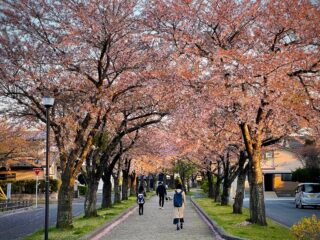About Akita Prefecture
Akita Prefecture is located in the Tohoku (Northeast) Region of Honshu Island, on the Sea of Japan coast. Though Akita was one of the last parts of Honshu to be permanently settled, evidence of human habitation in the area dates back at least 4,000 years.
Following the famous Battle of Sekigahara (1600), which led to the unification of Japan under the Tokugawa Shogunate, the Satake Clan (which had fought on the losing side of the battle) were ordered to move to this sparsely populated area from their former domain near Tokyo. Bringing with them modern technologies and techniques, the Satake Clan took advantage of the abundant natural resources of their new home to transform the region into a national center for rice-farming, brewing, mining and forestry.
The culture of Akita has been largely shaped by its geography and climate. Surrounded by mountains on all landward sides, Akita’s relative isolation and harsh winters have produced distinctive dialects, cuisines, festivals and traditions which have survived both the reign of the aristocratic Satake and the modernizing trends of globalization. A few of the more well-known examples include: Kiritampo, a dish of cooked rice molded into cylinders and grilled over open flames; Namahage, the fearsome ogre-like deities who terrorize children every winter; and Matagi, the venerable bear-hunters descended from the original inhabitants of the prefecture. This melding of old and new, this mixture of Akita’s traditional cultures and histories with outside influences, is a central theme which informs research, education and artistic production at Akita University of Art.
Akita Prefecture Official Website (English)
About Akita City
Akita City is the capital and largest city of Akita Prefecture. At around 300,000 residents, the City contains roughly a third of the entire prefectural population, and is the 4th-largest city in Northeast Japan. Having merged with several smaller towns and villages over the years, the geography of Akita City ranges from heavily forested hills and rural farmland in the south and east, to the city proper on the Sea of Japan coast.
Akita City is directly accessible from Tokyo by airplane and Shinkansen, and serves as the cultural and economic hub of the prefecture. The Kanto Festival, one of the largest festivals in Tohoku, is performed here every August, when teams of dancers carry enormous bamboo poles festooned with lanterns (simulating rice plants) down the main avenue of the City, while attempting to balance the poles on their heads, shoulders and hips.
The downtown area is centered around Akita Station, with many restaurants, stores and hotels nearby. The Akita Museum of Art (designed by renowned architect Tadao Ando), Senshu Park (where visitors can view cherry blossoms and the partially reconstructed castle of the Satake Clan) and the Akita City Center for Culture and Creation (an art and culture zone scheduled to open in the spring of 2021) are all within walking distance of the Station. AUA students and faculty were involved in the design of several features of the Station building itself, including the waiting lounge and bus terminal, which utilize Akita cedar wood.
Akita City Official Website (English)
About Araya District
Akita University of Art is located in Araya District, a mainly residential area of Akita City, about 20 minutes from Akita Station by car or bus, and about 5 minutes by train. The university is situated on the southern bank of the Omono River, the largest river in Akita, within sight of the Sea of Japan coast. Some points of interest include the Omoriyama Zoo, Hiyoshi Shrine, historic Omotemachi Street, and the Araya Glass Studio (link in Japanese only).
Local events include cherry blossom viewing at Arayasakura Park in the spring, the Sanno Festival in May, the Kashima Festival in June, and the Omono River Fireworks Festival in August. Araya Hot Springs, a public bath constructed from fragrant cypress wood, is just a short walk from the campus. Students do most of their shopping just across the Omono River at AEON Town, a large complex which features hardware/art supply stores, hundred-yen shops, grocery stores, restaurants, and even a McDonald’s.
Many students live in apartments or share houses in Araya, and walk or bike to campus. A branch of the Akita City Office, where students take care of taxes, insurance and other documentation, is located in Araya, as are several banks, post offices and ATMs.



















